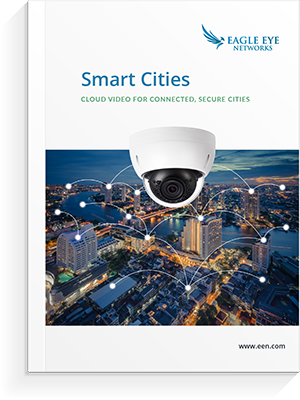Cloud Video Surveillance for Smart Cities
The PDF version of this whitepaper includes additional content – download for more information.
Download Smart Cities White Paper

Overview
The primary objective for Smart City initiatives is to intelligently use data and technology to make everyday life easier and better for the people who live in, work in and visit the city – while making innovative and efficient use of resources. Public safety plays an important role. This is why most smart city initiatives include video surveillance for key public areas, to achieve quicker alerting and better data to inform first responders regarding accidents, crimes and public safety situations.
However, if smart city initiatives take traditional approaches for physical security technology, they will undermine their primary smart city objective. Over a decade of smart city initiatives has revealed what it takes for smart city technology deployments to achieve the sustainable quality of life transformations they intend, in the face of the challenges that smart city tech projects face.
Recent successes have shown that cloud-based solutions are indispensable elements of smart city infrastructure, which includes both public and private infrastructure elements. Cloud-based deployments are essential for cost-effectiveness, scalability and short deployment time frames. Furthermore, smart city security technology projects have new technical requirements – some of which can only be met using cloud technology. This paper examines those requirements and points to two very recent projects that exemplify the kinds of success that can be achieved.
Smart Cities
In June 2018, the McKinsey Global Institute released an in-depth independent research and analysis report titled, “Smart cities: Digital solutions for a more livable future.”1 McKinsey’s research identified 60 data-driven smart city applications spanning the eight domains listed below. Eleven of these applications, on the next page, are physical security applications.
Security
Healthcare
Mobility
Water
Waste
Economic Development and Housing
Engagement and
Community
Energy
Smart Applications
Successful smart city security initiatives require more than just getting city planners and stakeholders, and their security integrators and consultants, on the “same page.”
They must all get on a “new page” that includes:
- Expanded system design thinking
- Up to date set of technology capabilities
- Active stakeholder and citizen involvement
All are required for smart city deployment success.




